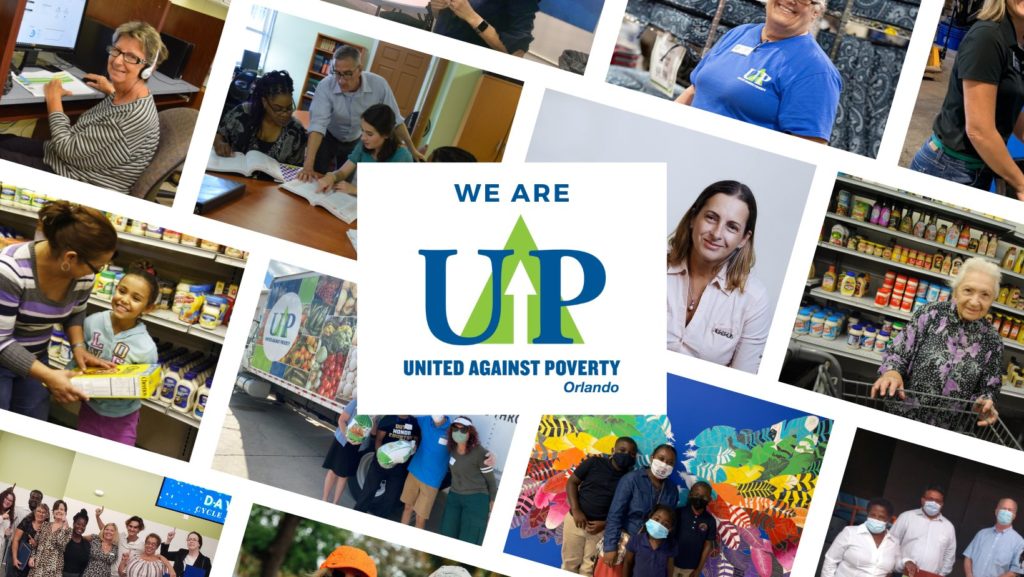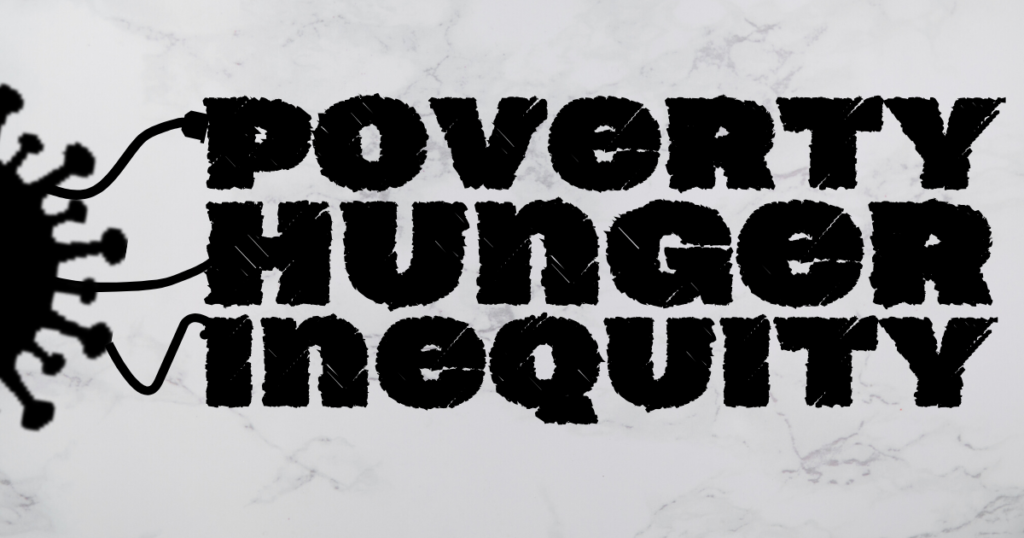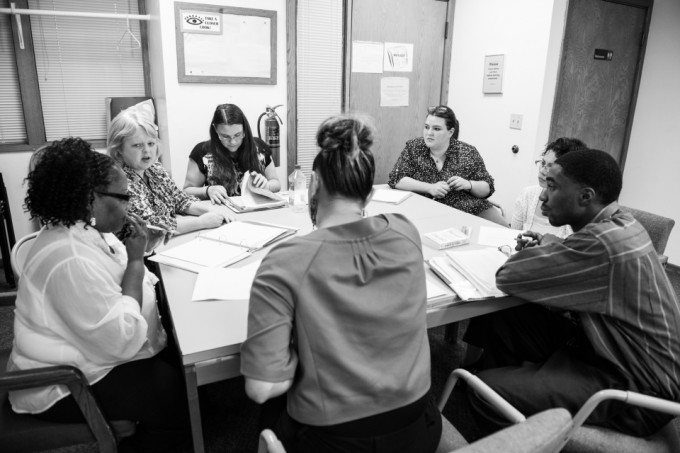Search results for: poverty
Collecting and distributing used clothes to the people living in abject poverty
Volunteer at United Against Poverty Orlando Grocery Center
Volunteer at United Against Poverty Orlando grocery center
Poverty, Hunger, Racial Inequality Supersized Amid Coronavirus
Before the coronavirus outbreak, food insecurity was already a serious problem in the United States. In 2018, 1 in 9 residents were food insecure—that’s 37 million people, including 11 million children. Poverty already hindered the well-being of 38.1 million U.S. residents, including 16% of the nation’s children. The nearly 2.3 million people in U.S. prisons…
Read MoreWorld Faith Counters Violence and Poverty Though Interfaith Engagement
World Faith, our Challenge the Gap beneficiary during July, August, and September 2015, endeavors to disincentive violence. How? By countering cultural narratives that explicitly or implicitly create divisions and animosity between diverse groups. By encouraging humanization through volunteering together to work on shared community concerns—rather than traditional interfaith dialogue—and addressing the underlying economic issues that…
Read MoreUpdate on SOIL, our most recent Poverty and Health beneficiary
SOIL, our Q3 2014 Poverty and Health Nominee was awarded $11,095 grant to further their program. Meet one of their clients and see what SOIL has to say about their program:"I was very happy that I was able to receive a second model toilet for my home. I had a few problems with the first model, but then…
Read MoreWWEE: a barrier at the brink of poverty
One in three million women in the US lives in, or on the brink of, poverty. This amounts to 42 million women who stand to lose their paychecks, jobs, or even housing on the basis of an injury, a broken water heater, or a broken-down car. According to the Shriver Report’s A Woman’s Nation Pushes…
Read MoreThe Night Ministry tackles poverty and homelessness in Chicago
The Night Ministry, our third-quarter Challenge the Gap beneficiary, provides housing, health care and support to Chicago community members struggling with poverty and homelessness. The Night Ministry was founded in 1976 by a diverse group of congregations and synagogues. Thirty-eight years later, it has grown into a large, secular organization with multiple programs designed to…
Read MoreMillennium Development Goal 1: Eradicating extreme poverty and hunger
 By Stephanie Jackson Ali
By Stephanie Jackson Ali
In a recent post, Foundation Beyond Belief notified members that we would be incorporating the Millennium Development Goals into our charity vetting process. In order to better help our members to get acquainted with these goals, we are rolling out a monthly explanation of the goals, the progress made thus far toward their achievement, and what we, as a global community, have left to achieve in the remaining three years of the plan. Read more about the background of the Millennium Development Goals here. Unless otherwise noted, all information below comes directly from the United Nations.
Millennium Development Goal 1 is to eradicate extreme poverty and hunger. This goal, like many others, was broken down into three separate targets:
1A: Halve, between 1990 and 2015, the proportion of people whose income is less than $1 a day
1B: Achieve full and productive employment and decent work for all, including women and young people
1C: Halve, between 1990 and 2015, the proportion of people who suffer from hunger
The work to achieve this goal was rolled out immediately, as The World Bank, International Monetary Fund, and African Development Bank were provided funds by G8 countries to cancel out debt of Heavily Indebted Poor Countries in order to help them focus on development efforts.
 Efforts to reduce poverty and hunger have focused on a wide variety of programs, from investment in local agriculture and job creation to support of other MDGs such as universal education and child and maternal health. The focus of these programs, when done well, is on sustainable change, not direct aid, in order to build a future of success for these countries and their people.
Efforts to reduce poverty and hunger have focused on a wide variety of programs, from investment in local agriculture and job creation to support of other MDGs such as universal education and child and maternal health. The focus of these programs, when done well, is on sustainable change, not direct aid, in order to build a future of success for these countries and their people.
The World Bank has been a very active partner in achieving this goal, including $89 billion in support to low- and middle-income countries from July 2008 to January 2010.
The chart to the left shows the decline in extreme poverty rates worldwide since 1980. While the recent global food and economic crises have considerably slowed progress, with less than two years to go, the world is on track to meet this first goal. In a 25-year period, the poverty rate in East Asia fell from almost 60 percent to less than 20 percent. However, the rate declined only slightly in sub-Saharan Africa in that time, from 58 to 51 percent. If the world continues its current rate, by 2015, roughly 920 million people would still be living under the international poverty line of $1.25/day.
 Gains in hunger reduction have been slower. One in four children in the developing world is considered underweight. At the beginning of the MDG period, the number was one in three. Children in rural areas are twice as likely to be underweight as urban dwellers. Overall, the proportion of people suffering from hunger is down since 1990, but the total number of hungry people is up.
Gains in hunger reduction have been slower. One in four children in the developing world is considered underweight. At the beginning of the MDG period, the number was one in three. Children in rural areas are twice as likely to be underweight as urban dwellers. Overall, the proportion of people suffering from hunger is down since 1990, but the total number of hungry people is up.
There is much progress to be made if we want to reach these goals by 2015, and to ensure we continue to work to improve even after that date. FBB has a strong history of supporting poverty- and hunger-reducing charities, and we will seek to find those working to best continue a sustainable plan for reduction in the future.
For more reading on the subject of global development and poverty eradication, try these books (these selections cover a myriad of belief systems and include representation from those who have worked on the ground and/or those who come from the countries most affected):
- Dead Aid: Why Aid Is Not Working and How There Is a Better Way for Africa by Dambisa Moyo
- The End of Poverty: Economic Possibilities for Our Time by Jeffrey Sachs
- Poor Economics: A Radical Rethinking of the Way to Fight Global Poverty by Abhijit Banerjee and Ester Duflo
- The Bottom Billion: Why the Poorest Countries Are Failing and What Can Be Done About It by Paul Collier
- Development as Freedom by Amartya Sen
Posts in this series:
- FBB aligns with UN effort to end poverty
- Millennium Development Goal 2: Achieve universal primary education
- Millennium Development Goal 3: Promote gender equality and empower women
- FBB’s Millennium Development Goals track record
- Millennium Development Goal 4: Reduce child mortality
- Millennium Development Goal 5: Improve maternal health
- Millennium Development Goal 6: Combat AIDS/HIV, malaria, and other diseases
The Citizens Foundation lifts communities out of poverty

By Cathleen O’Grady
Part of the story of The Citizens Foundation, Foundation Beyond Belief’s current Education beneficiary, can be told with its impressive statistics. TCF has grown from just five schools and 800 students in 1996 to an astounding 830 schools across five provinces, 115,000 students, and an all-female faculty of 5800 women in 2013.
The 1,678 graduates in 2012 achieved a 90% pass rate in the Secondary Board Examination, with 14% of those who passed achieving an A+ grade, and a further 39% achieving an A. 530 fifth graders achieved a 100% pass rate in the Punjab Primary Board Examination, and an astonishing 83% of these students achieved an A or A+ grade.

The main aim of Zubaida, a primary school student, is to “impart education to her less privileged neighbors who cannot afford to go to school.” Sughra, 16, has “high ambitions to help the people of her village.” Gul, an eighth-grader in Jam Kando Goth, wants to become a doctor so that “she can help diabetic patients like her father,” whose diabetes has led to the amputation of both his legs. Many students dream of entering medicine, and some TCF alumni are well on their way to achieving their goal: Sidra, Shahida, and Zakia, all young women who have thrived at TCF, are on their way to three of the most prestigious medical schools in Pakistan.

Connect with TCF on Facebook or Twitter, and find out more on Foundation Beyond Belief’s beneficiary page.
Read More




